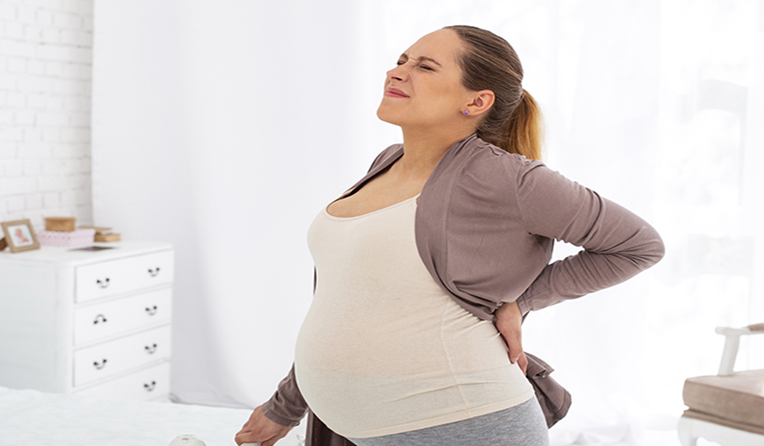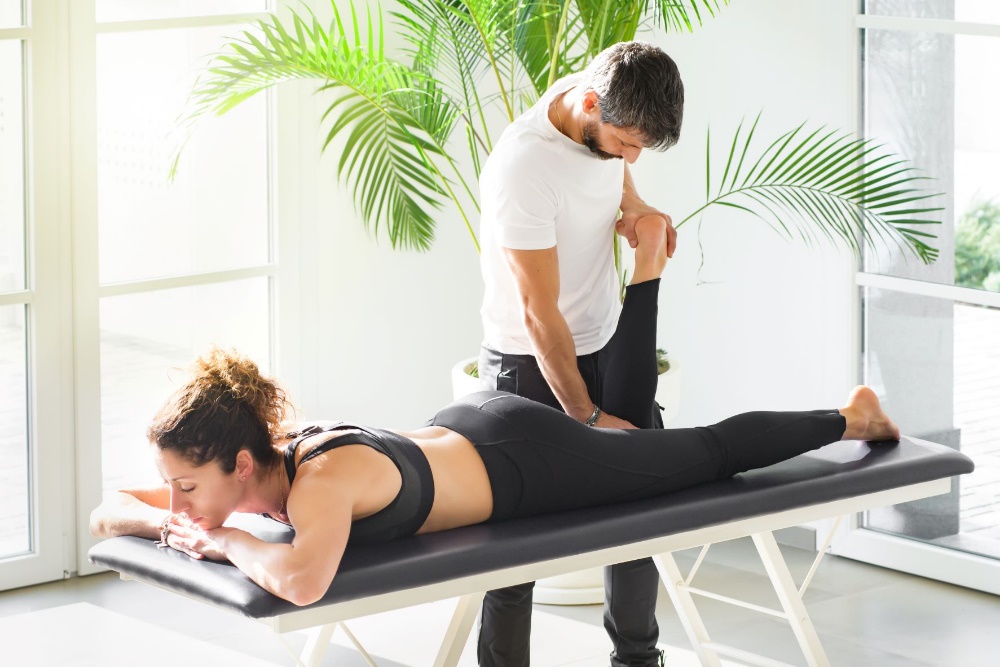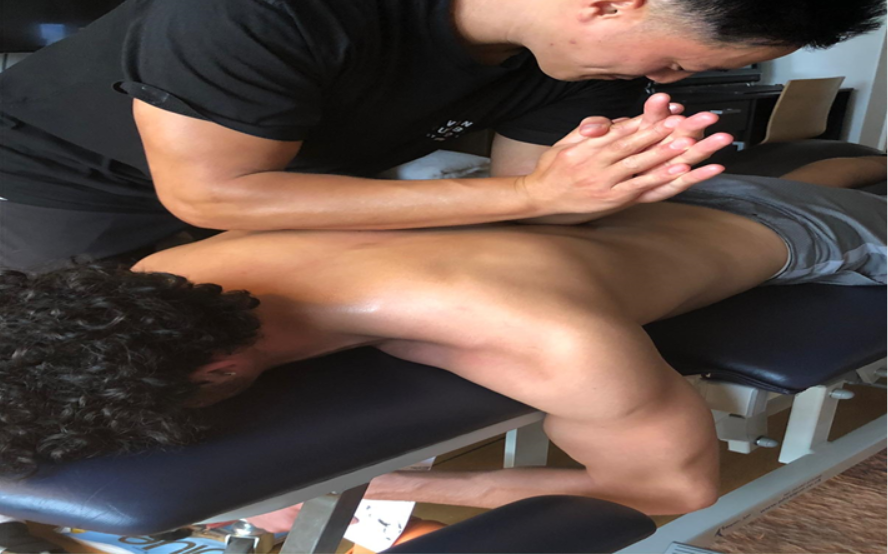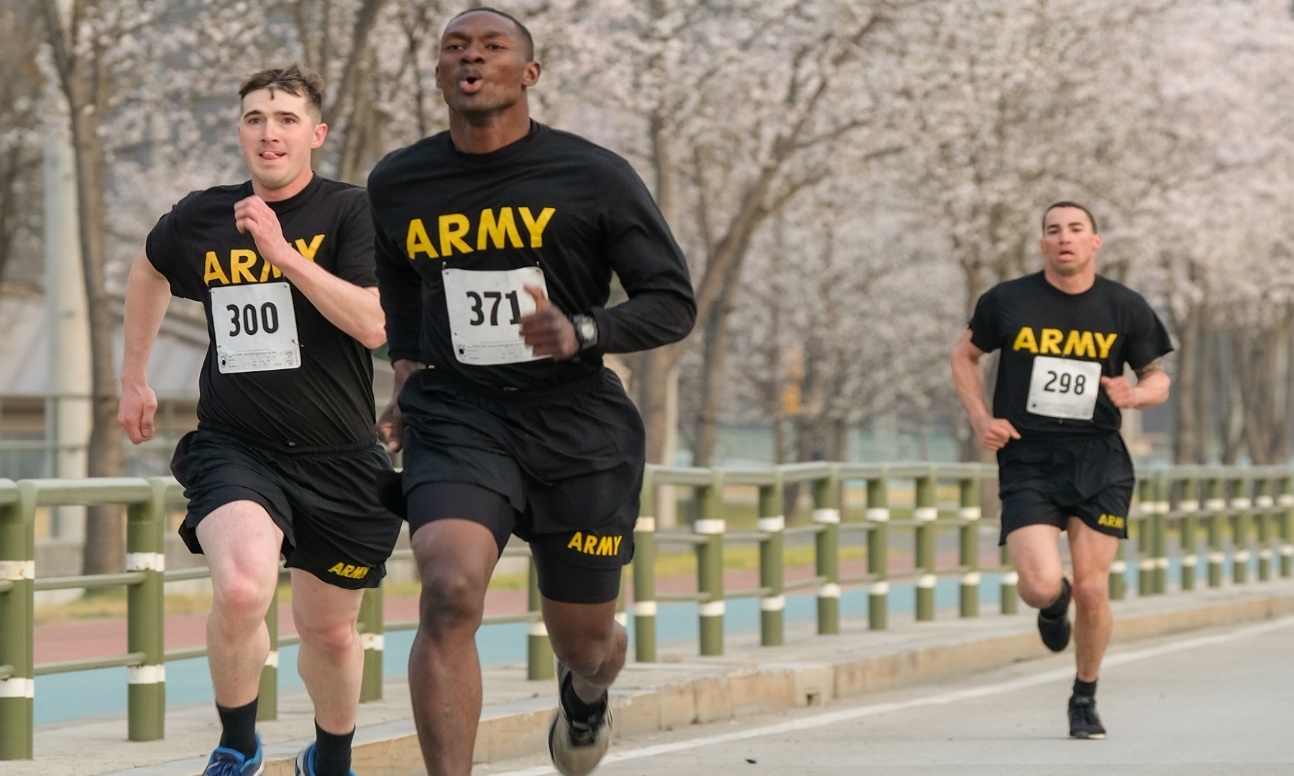DEAD BUTT SYNDROME / GLUTE INHIBITION & HIP INSTABILITY: A SPORTS PHYSIOTHERAPEUTIC OVERVIEW
In the following article we will analyze and discuss the importance of the role of the gluteal muscles/hip instability in the quality of movement and how sports physiotherapy Manchester can help prevent, rehabilitate and relieve this kind of dysfunction. Inhibited muscle groups due to wrong motor neural firing patterns or a sedentary life lacking mobility. Sitting all day is a health risk. It is not the first time that we have been warned, so why do we keep doing it?
WHAT CAN CAUSE HIP INSTABILITY?
Hip instability is a loose or unstable hip joint that is commonly yielded by problems with regard to the ligaments.
In hip dislocation, the head of the femur tends to come out of its socket. This unpleasant condition requires medical treatment and physiotherapeutic approach in Manchester.

An accident or sports-related injuries can bring about instability or dislocation of the hip. (Kwesi Dawson-Amoah et la 2018).
However, there is a possibility where people are born with structural issues in the hip joint, this is called hip dysplasia, which can induce the hip joint to be dislocated. If your situation is this one, doctors or sports physiotherapists may identify dysplasia at birth, or you may not observe it until you are older.
Whatever the source of your hip problems, we can help at our Sports Injury Clinic in Manchester. Our orthopedic, physio in Manchester and sports medicine specialists will thoroughly look into your hip and put forward appropriate non-invasive solutions such as physical therapy or sports training for hip instability.
WHAT ARE THE FIRST SIGNS OF HIP PROBLEMS?
It is important that we know when we suffer from this ailment and from My Sports Injury Clinic based in the heart of Manchester City, we are going to describe the symptoms of hip problems in order to solve it as soon as possible and avoid the discomfort it causes.
The first symptom that we are going to feel with hip wear is the most obvious and precedes any arthritic problem, and that is pain. But we will not feel pain in the hip itself, but rather it is focused on the inguinal area. In fact, it can extend to the front of the thigh, reaching the knee and the buttock.
In this way, we cannot clarify exactly that we have a hip wear problem, but if your pain radiates to all these areas, it is very possible that it is, indeed, coxofemoral osteoarthritis. If it is only your hip that hurts, it is probably due to a muscle problem rather than wear and tear. Remember that the focus of pain appears in the groin.

Another characteristic symptom is feeling crackling in the hip area. We can feel them with movement when walking and even when sitting down and crossing our legs.
They are annoying and painful crunches that only stop when we stop moving. Apart from the crunches, a burning sensation in the groin will be indicating that something is happening in our hip, most likely osteoarthritis.
Weakness is another symptom derived from hip wear, and as it progresses, it makes it impossible for us to move as before, so everything costs us more effort.
The walks end with pain and it is very difficult for us to walk or climb stairs, carry weight or play sports. We will notice the loaded area as if it were very weak, even at night, just by turning or moving in bed, we will feel these creaks accompanied by pain. Only when movement ceases, discomfort disappears. This symptom grows as wear is greater, which is over time if we do not remedy it.
Various investigations have linked inactivity with heart disease, obesity, diabetes and even cancer (Arocha Rodulfo JI, 2019). In fact, statistics from an article published by American Journal of Preventive Medicine (AJPM) which show some implausible outcomes where around 92,000 ladies with an age rate from 50 up to 79 years old were followed over a 12 year-period, in this sense, by the inaction of being sitting for long time periods is utterly tied in with early decease (Rebecca Seguin et la, 2014).
But now science has discovered another problem. It is known as 'gluteal amnesia', dead butt syndrome or glute inhibition and it is an atrophy of the gluteal muscles brought on either by leading a too sedentary life or by performing improper movements whilst doing physical activities , (says Cameron Whit, 2019) in an article published in Healthline.

Hence, the term “Dead Butt Syndrome” essentially refers to the fact that our gluteal muscles tend to omit their foremost aim that is to keep suitable alignment and provide support to our skeleton so it generates imbalance, muscle tightness, and weakness all over the buttocks and the hip as well, according to an article issued by Parade. Gluteal amnesia introduces itself as a mechanical alteration that yields deficiencies in lumbopelvic stabilisation. This fully affects the entire movement system that takes place in our body (Marco Aurélio N. Added et la, 2018).
Next, we present a brief analysis where we explain this condition, ways to detect it and combat it. This seeks to guide the physio Manchester, coach and/or trainee, so that they can "awaken" this powerful and necessary muscle group; which is responsible for stabilising the lower kinematic chains and is of utmost importance in the correct quality of movement, but first let’s dive into some anatomical insight of the gluteal muscles.
WHAT ARE THE GLUTEAL MUSCLES?
The glutes are 3 muscles that are located at the back of the pelvis, in the gluteal region. These according to the shape and location are known as gluteus medius, maximus and minor, and are important for various movements of the lower extremities and the hip (Adel Elzanie et la, 2021).

WHAT IS THE FUNCTION OF THE BUTTOCK/ GLUTEAL MUSCLES?
Although all of them are important for various movements to be executed, each one of them has a specific task depending on the place of origin and insertion. So, the functions of each gluteal muscle are given as follows.
Gluteus minimus; it is mainly involved in abduction, but it also has certain functions related to rotations (Anthony J. Greco et la, 2021).
Gluteus medius; it is the same abductor, but it also works on internal and external rotation and extension (Sean Sadler et la, 2019).
Gluteus maximus; its main functions are related to extension and external rotation, although it also collaborates in adduction and abduction (Judith Borger et la, 2021).
In conclusion, they are tissues that are involved in most joint movements in the pelvic and buttock area.

With that being explained we carry on learning more about this Gluteal Amnesia condition.
WHAT ARE THE SYMPTOMS OF GLUTEAL AMNESIA?
A dead butt, as we will see, increases the chances of presenting lumbar pain, pubalgia, knee valgus, referred pain, stiffness, and false support, amongst other issues. Ultimately, this will cause a greater risk of injury as a result of muscular deficiencies and over-compensation (Ortiz, Jonathan Nahuel, 2018).
This phenomenon has also been associated with the development of low back pain, either as a cause or as a consequence, however, Dr. Baily says, lower back aches might be experienced as a result of loss strength in your core, hips, and buttocks, sometimes a pretty similar sciatic-like pain can be inflicted all the way down your leg by gluteal inhibition.
So, working this much requested muscle group then becomes something extremely essential and far beyond fad aesthetics. Where everyone wants to tone it, but few investigate the correct way to activate it in response to this need.
SEDENTARY LIFESTYLE AND ITS ROLE IN GLUTEAL AMNESIA
It is important to first clarify the importance of the gluteus maximus muscle which is altered in our daily activities; either by sedentary lifestyle or lack of movements that activate it.
This is mainly due to spending hours and hours sitting at work or in the car in the wrong positions; which ends up causing muscle groups such as the iliopsoas and hamstrings to shorten and our hips to be retroverted due to gluteal inhibition. (Amy H Amabile et la 2017).
But this does not happen only in sedentary people. It also occurs in athletes who do not perform corrective and preventive work to strengthen their buttocks, as can be the case of soccer players, rugby players, amongst others.

Where the excessive use of closing chain muscles and flexor action cause their antagonists to be inhibited, let us remember that the glutes participate or should participate in all motor actions, from being upright to running.
If we prolong these bad habits over time, we obtain what is currently called "gluteal amnesia" syndrome. Or what would basically be an inhibition of the gluteus in its action of stabilisation and extension of the hip (Gowitzke, B. A et la, 1999).
MUSCULAR COMPENSATIONS CAUSED BY GLUTEAL AMNESIA
Forgetting the gluteus maximus muscle ends up triggering the shortening of other muscle groups. Such is the case with the hamstrings which begins to take on the full and main function of extending the hip. By its counterpart, the iliopsoas is hypertonic in its excessive hip flexion action.
To be precise, the gluteus maximus is one of the strongest and most important muscles in the body, relevance that increases as it is also responsible for lumbopelvic/sacroiliac joint stability.
Forming part of the well-known and so important CORE, central stabilisation zone and from where the centrifugal force that will be translated to our extremities arises (Akuthota, V et la, 2008).
HOW IS GLUTEAL AMNESIA DIAGNOSED?
To detect it, physical therapy specialist in Manchester resort to a simple physical clinical examination, the Trendelenburg test. It consists of lifting one leg while standing in front of the specialist.
If the pelvis sinks on the side of the body where the leg was raised, that indicates weakness in the gluteus medius on the opposite side. (Matthew Buckthorpe et la 2019).
STRATEGIES FOR ADDRESSING GLUTEAL AMNESIA & HOW PHYSICAL THERAPY CAN BENEFIT YOU?
Rehabilitation exercises for gluteal injuries are essential to achieve the empowerment and strengthening of these muscles, which are vital for walking, balance and the lower back.
When an injury of any kind has occurred in the gluteus area, physiotherapy work is very important to be able to achieve a good recovery in the area that allows us to continue with our level of autonomy and independence.
In principle, rest is usually beneficial in most cases, since forcing and loading the area more will only contribute to aggravating the problem. As for the exercises that can be performed, it must be taken into account that they will depend on the area of the affected gluteus.
SPECIFIC EXERCISES TO ACTIVATE AND TREAT GLUTEAL AMNESIA
The only way to prevent the "death" of your butt, according to the World Health Organization (WHO), is to exercise. This muscle group is involved in exercises such as squats or the Romanian deadlift.
The glute bridge is an exercise that can be practiced in isometry or with repetitions. Lying on the ground, with the knees bent and the heels close to the buttocks, the execution consists of raising the hips without taking the shoulders off the ground.
Abduction bridge is a variant of the previous exercise that helps to activate the abductor. With an elastic band placed on the legs and in the same initial position, it is about opening the legs when the hip has already been raised and the gluteus is contracted.

Simple hip abduction, lying on your side, with your legs bent at 90 degrees and a resistance band a little above your knees, it is about opening the leg that is on top and leaving the other on the ground.
References
Arocha Rodulfo JI. Sedentary lifestyle a disease from xxi century. Clin Investig Arterioscler. 2019 Sep-Oct;31(5):233-240. English, Spanish. doi: 10.1016/j.arteri.2019.04.004. Epub 2019 Jun 17. PMID: 31221536.
Dawson-Amoah K, Raszewski J, Duplantier N, Waddell BS. Dislocation of the Hip: A Review of Types, Causes, and Treatment. Ochsner J. 2018 Fall;18(3):242-252. doi: 10.31486/toj.17.0079. PMID: 30275789; PMCID: PMC6162140.
Rebecca Seguin, David M. Buchner, Jingmin Liu, Matthew Allison, Todd Manini, Ching-Yun Wang, JoAnn E. Manson, Catherine R. Messina, Mahesh J. Patel, Larry Moreland, Marcia L. Stefanick, Andrea Z. LaCroix, Sedentary Behavior and Mortality in Older Women: The Women’s Health Initiative, American Journal of Preventive Medicine, Volume 46, Issue 2, 2014, Pages 122-135, ISSN 0749-3797, https://doi.org/10.1016/j.amepre.2013.10.021.
Added, Marco Aurélio N et al. “STRENGTHENING THE GLUTEUS MAXIMUS IN SUBJECTS WITH SACROILIAC DYSFUNCTION.” International journal of sports physical therapy vol. 13,1 (2018): 114-120.
Amabile AH, Bolte JH, Richter SD. Atrophy of gluteus maximus among women with a history of chronic low back pain. PLoS One. 2017 Jul 17;12(7):e0177008. doi: 10.1371/journal.pone.0177008. PMID: 28715424; PMCID: PMC5513394.
Sadler, Sean et al. “Gluteus medius muscle function in people with and without low back pain: a systematic review.” BMC musculoskeletal disorders vol. 20,1 463. 22 Oct. 2019, doi:10.1186/s12891-019-2833-4
Buckthorpe M, Stride M, Villa FD. ASSESSING AND TREATING GLUTEUS MAXIMUS WEAKNESS - A CLINICAL COMMENTARY. Int J Sports Phys Ther. 2019 Jul;14(4):655-669. PMID: 31440415; PMCID: PMC6670060.
Greco AJ, Vilella RC. Anatomy, Bony Pelvis and Lower Limb, Gluteus Minimus Muscle. [Updated 2021 Jul 26]. In: StatPearls [Internet]. Treasure Island (FL): StatPearls Publishing; 2022 Jan-. Available from: https://www.ncbi.nlm.nih.gov/books/NBK556144/
Elzanie A, Borger J. Anatomy, Bony Pelvis and Lower Limb, Gluteus Maximus Muscle. [Updated 2021 Jul 19]. In: StatPearls [Internet]. Treasure Island (FL): StatPearls Publishing; 2022 Jan-. Available from: https://www.ncbi.nlm.nih.gov/books/NBK538193/
Akuthota V, Ferreiro A, Moore T, Fredericson M. Core stability exercise principles. Curr Sports Med Rep. 2008 Feb;7(1):39-44. doi: 10.1097/01.CSMR.0000308663.13278.69. PMID: 18296944.





